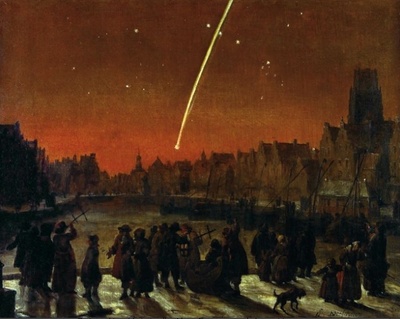Great Comet of 1680
Passing only 0.4 AUs from Earth on 30 November, it sped around an incredibly close perihelion of .006 AU (898,000 km) on 18 December 1680, reaching its peak brightness on 29 December as it rushed outward again. It was last observed on 19 March 1681. As of December 2010 the comet was about 252.1 A.U. from the Sun.
While the Kirch Comet of 1680-1681 was discovered and subsequently named for Gottfried Kirch, credit must also be given to the Jesuit, Eusebio Kino, who charted the comet’s course. During his delayed departure for Mexico, Kino began his observations of the comet in Cadíz in late 1680. Upon his arrival in Mexico City, he published his Exposisión astronómica de el [sic] cometa (Mexico City, 1681) in which he presented his findings. Kino’s Exposisión astronómica is among one of the earliest scientific treatises published by a European in the New World.
Although it was an undeniably a sungrazing comet, it was probably not part of the Kreutz family. Aside from its brilliance, it is probably most noted for being used by Isaac Newton to test and verify Kepler's laws.
